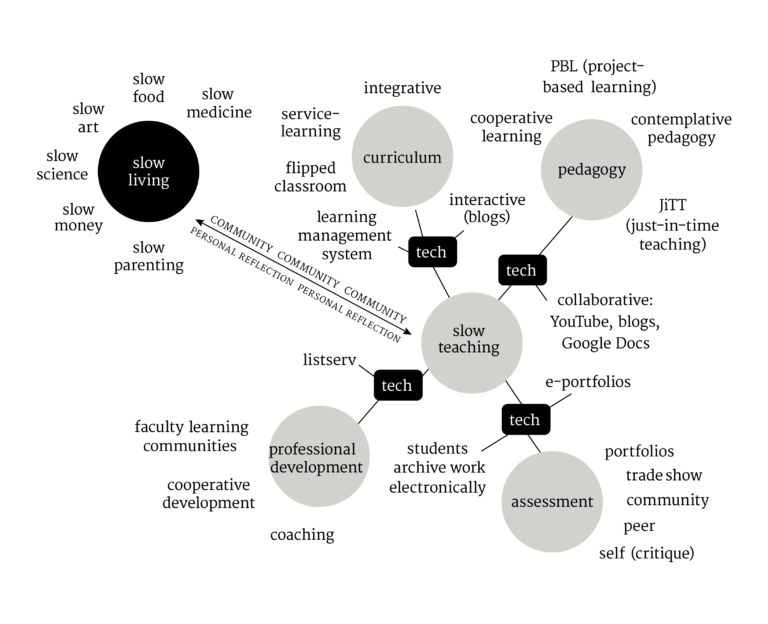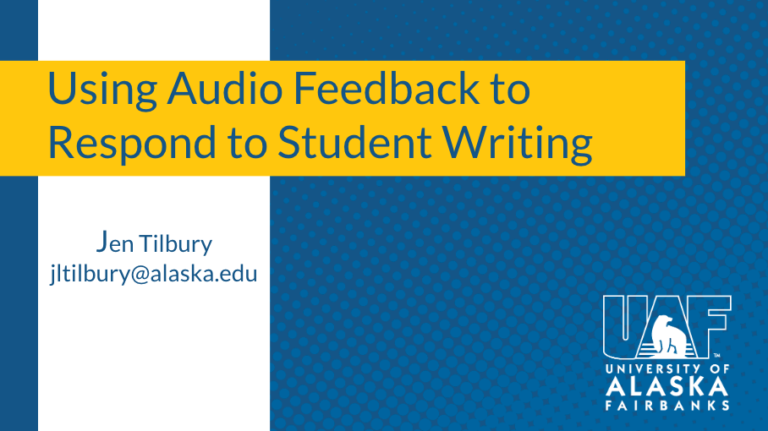Teaching language online offers unique opportunities
Instructors often ask, “How can my subject area be taught online?” One commonly questioned subject is foreign language education. The worry is that the online context is missing something that only exists in a face-to-face classroom. But a well-designed, well-delivered online language course can be successful while making more effective use of a teacher’s time. This is achieved by removing the managerial nature of teacher talk from the course and focusing on meaningful interaction and language production.1
Language education has unique considerations, but the following information applies to every online class you may offer or take in the future.
Two key findings in language learning research relate to the importance of output and interaction. First, enabling students to produce language (output) can be difficult in a physical classroom. Online courses allow shy or less motivated students to participate in discussions. Second, providing opportunities for interaction with others is shown to be key in mastering a second language. The teacher-centered nature of a face-to-face class can hinder this, while in an online class, the teacher can be present when needed, or out of the way when student-centered activities occur.2
The online context offers exciting prospects for meeting these criteria. Unlike a face-to-face course in which the teacher’s time and speech is directed at the whole class or groups of students most of the time, the asynchronous nature of an online course allows for scheduled, focused interaction between students or with the teacher through synchronous group communication tools like Google Hangouts, Appear.in, or Blackboard Collaborate. For many students, this kind of collaboration increases their motivation to learn.3
Imagine a three-credit French class meeting face-to-face. In each class session, students listen to the teacher, engage in speaking or listening activities, manage class business, take and correct quizzes, etc. A great deal of the time is teacher-centered, with few meaningful or extended one-on-one conversations between teacher and students. In that same French course online, class management tasks can happen as a natural backchannel throughout the course, and the weeks’ activities would involve the teacher as much or as little as is necessary.
For example, organizing one-on-one discussions with each student is often infeasible in a traditional physical classroom, as it either takes the teacher away from the other students or necessitates scheduling time outside of class. Even scheduling an hour per student with the teacher over a semester would eat away several weeks of classtime. In an online course, those sessions could be that week’s activity and can be handily managed with a tool such as Google Calendar’s appointment slots feature. Oregon State University successfully used this model of scheduled interaction in their Online German Language program, which recently became the second largest German language program in the U.S. Their program provides 20-30 minutes of one-on-one video chat with the professor each week.4 OSU German Professor Sebastian Heiduschke spoke on this topic to UAF faculty in the Spring 2015.5
There is no guarantee of success for online language courses. But the principles that mark good language instruction in the classroom apply doubly to online classes. The workload can be heavy at first; designing and preparing the course beforehand is a true undertaking. But the week-to-week workload will probably be significantly less. And your valuable role as a teacher will remain just as essential and idiosyncratic online as it is in a classroom.
References
- Meskill, C. and Anthony, N. (2015). Teaching languages online. Multilingual Matters
- Anton, M. (1999). The discourse of a learner’centered classroom: Sociocultural perspectives on teacher’learner interaction in the second’language classroom. The Modern Language Journal 83.3 (1999): 303-318.
- Ushida, E. (2005). The role of students’ attitudes and motivation in second language learning in online language courses. CALICO journal (2005): 49-78.
- Hansen, T. (2016). New online German degree bridges distance gap with ample face-to-face time. Oregon State Ecampus (20 May. 2016)
- Faculty on TAP with Sebastian Heiduschke – YouTube. (2015). 20 May. 2016




